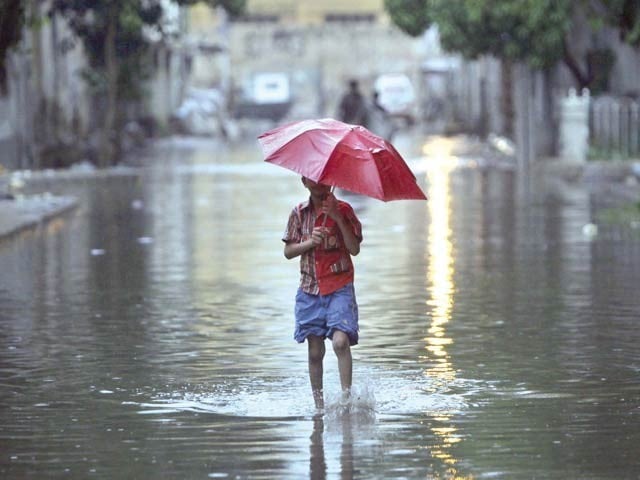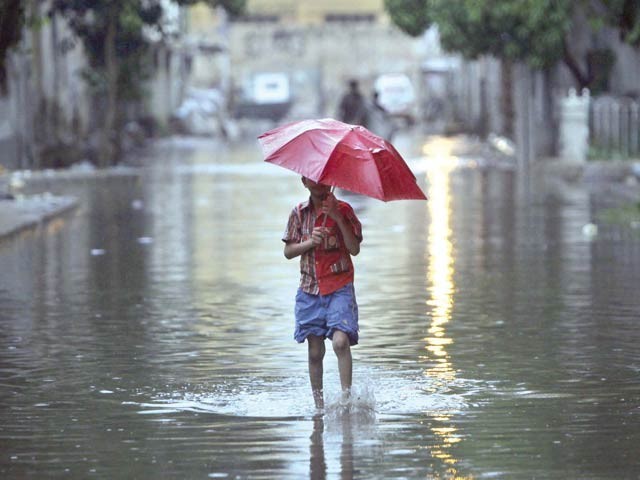
The Meteorological Department has said in the forecast made on the latest model for July to September that there may be more than normal rains in Upper Punjab and other areas. Photo: File
Karachi: According to the current assessment of monsoon weather from July to September by the Department of Meteorology, according to the models made for global forecasting, normal rains are likely to occur in most areas of Pakistan during the monsoon.
According to the forecast, slightly more rain than normal is expected in Upper Punjab, Azad Jammu and Kashmir and Khyber Pakhtunkhwa. The southwest parts of Sindh and Balochistan are likely to receive less than normal rainfall during monsoon.
Sindh may experience 17% less rains while Balochistan may experience 11% less rains. The normal average monsoon rainfall in Sindh is 116 mm while in Balochistan it is 52 mm.
According to the Department of Meteorology, temperatures are expected to be slightly above normal during the monsoon in most areas across Pakistan, while abnormal temperatures are likely to remain in the southwestern regions of Balochistan, Upper Khyber Pakhtunkhwa and Gilgit-Baltistan.
North Punjab, Azad Jammu and Kashmir and Khyber Pakhtunkhwa are likely to experience flash flooding due to expected and slightly higher than normal rainfall.
The rains will help replenish the existing water reservoirs and groundwater levels in these areas. Central and southern Punjab, Sindh and Balochistan may experience water shortages due to slightly less than normal rainfall in the cotton growing areas.
In the areas of Sindh and Balochistan, seasonal crops, vegetables and gardens may also face shortage of water.
Agriculture and livestock may be affected due to higher than normal temperature in northwestern areas of Balochistan, higher than normal temperature in upper Khyber Pakhtunkhwa, Gilgit-Baltistan regions may increase the speed of melting of glaciers.
Risk of flash flood will increase due to glacier melting, heat wave is likely in some places due to higher than expected temperature in Sindh, Baluchistan and Lower Punjab.
(function(d, s, id){
var js, fjs = d.getElementsByTagName(s)[0];
if (d.getElementById(id)) {return;}
js = d.createElement(s); js.id = id;
js.src = “//connect.facebook.net/en_US/sdk.js#xfbml=1&version=v2.3&appId=770767426360150”;
fjs.parentNode.insertBefore(js, fjs);
}(document, ‘script’, ‘facebook-jssdk’));
(function(d, s, id) {
var js, fjs = d.getElementsByTagName(s)[0];
if (d.getElementById(id)) return;
js = d.createElement(s); js.id = id;
js.src = “//connect.facebook.net/en_GB/sdk.js#xfbml=1&version=v2.7”;
fjs.parentNode.insertBefore(js, fjs);
}(document, ‘script’, ‘facebook-jssdk’));



